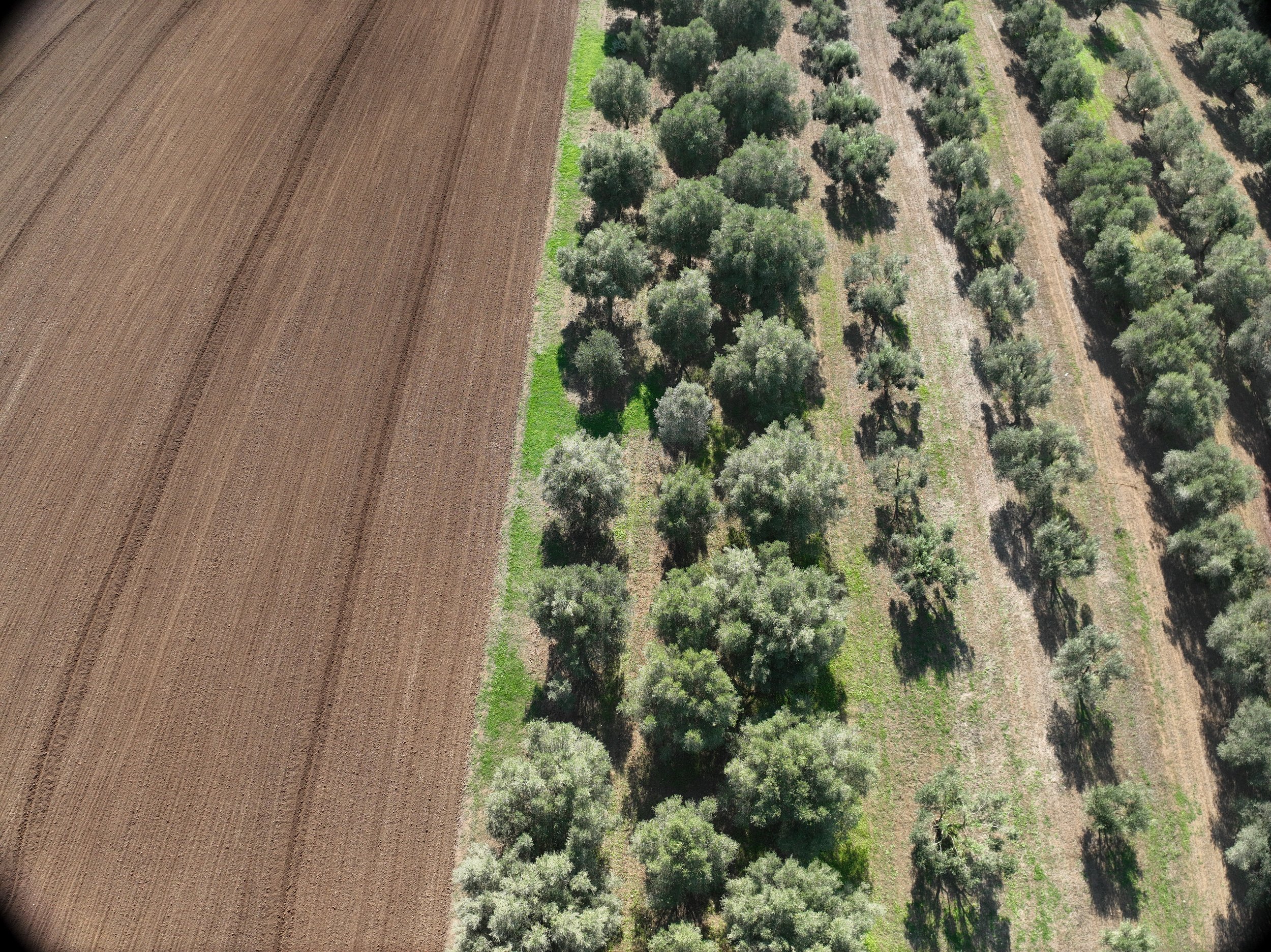Exploring the Sellari Olive Grove
The Sellari Olive Grove (Francica, Calabria, Italy) is an example of simplicity and resilience. With a management approach focused exclusively on olive trees and a complete lack of biodiversity, it presents a unique challenge, especially in the face of increasingly difficult climatic conditions. Through advanced technologies and on-site analysis, we are working to improve the yield and sustainability of this olive grove.
Olive Grove Data and Characteristics
Location: Sellari, Francica, Calabria, Italy
Size: Approximately 1.2 hectares
Biodiversity: None, only olive trees and some vegetation around an old haystack
Topography: Flat terrain, easy to manage but vulnerable to drought
Challenges: Drought, lack of biodiversity, whitefly infestation
Our Activities in 2024, Season by Season
2024 highlighted the critical issues of a biodiversity-lacking olive grove like Sellari. Each season provided valuable insights for tackling challenges such as drought and water resource management, with the goal of making the olive grove more resilient.
Spring, April: The Blooming Olive Grove
Video of the Sellari Olive Grove Captured by Drone in Spring 2024
In spring, the Sellari olive grove displayed uniform vegetation with no obvious signs of stress. The olive trees, with branches full of green leaves, were in bloom. However, the lack of biodiversity was evident: the only spontaneous vegetation was concentrated around the old haystack.
We conducted a flight with a traditional (RGB) drone to document the general condition and carried out an on-ground inspection to collect preliminary data. The images showed an olive grove that appeared healthy but with latent issues that would surface in the following months.
Summer, August: The Olive Grove in Distress
The Arid Land Under the Summer Sun
In summer, drought severely impacted Sellari. The flat terrain, completely lacking vegetative cover, appeared dry and hot. The absence of biodiversity and cover crops worsened the situation, leading to:
Soil erosion.
Increased heat absorption from the sun.
Loss of soil moisture.
This condition is clearly visible in the aerial RGB photo, which shows the bare, arid land
Dry Olives on the Trees and the Whitefly Infestation
High temperatures and prolonged drought left many olives dried on the branches, a clear sign of water stress in the olive grove. Additionally, the whitefly infestation worsened the situation, affecting the few remaining olives. The photo clearly shows dried olives on the trees, highlighting the combined effects of drought and pests.
Recommended Solutions:
To reduce the impact of pests and improve the resilience of the olive trees, it is essential to introduce plants like lavender and rosemary to repel pests and wildflowers to attract beneficial insects such as ladybugs.
Multispectral Analysis and Resilience
Thanks to multispectral imaging, we can identify which trees are healthy and which are under stress. The NDVI (Normalized Difference Vegetation Index) measures plant health, with the image showing the following colors:
Green: Healthy and thriving trees.
Yellow and Orange: Stressed vegetation.
Red: Bare or plowed soil without vegetation.
The plowed areas, visible in red, highlight how this practice is no longer sustainable: bare soil loses moisture, absorbs infrared heat, and increases temperature, further stressing the trees and causing dried olives.
Solution:
Replace plowing with cover crops such as fava beans, lavender, and rosemary to improve soil quality, retain moisture, and repel pests.
Sustainable Solutions for Water Retention
Thanks to our drones and analysis software, we have created a detailed map of the terrain surface. The first image highlights high zones (in red) and low zones (in blue), showing the slope and layout of the land. This data is essential for planning infiltration trenches—small ditches that collect rainwater and improve its absorption into the soil without altering the natural landscape.
Autumn, September: A Difficult Harvest
In September, the olive trees at Sellari showed signs of recovery, but the effects of the drought were still apparent. The olives began to ripen, but production remained low. Multispectral images helped distinguish branches ready for harvest from empty ones, but the lack of resources made a selective harvesting approach impossible.
A Regenerative Future for Olive Groves
Our work at Sellari demonstrates how innovation and sustainability can coexist to tackle today’s agricultural challenges. Through advanced technologies and a targeted approach, we are creating a replicable model for other olive groves.
Are you interested in learning how we can help improve your olive grove? Contact us to discuss how technology and sustainable solutions can revolutionize your land.













